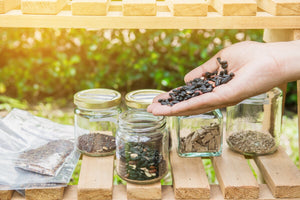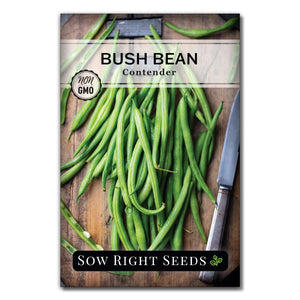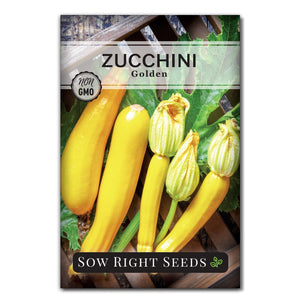Is Your Soil Warm Enough? Find the Best Temperature for Seed Germination
Direct sowingSeeds can be pretty adaptable. There's always a chance that with soil and moisture, they'll germinate. But if you want optimal seed germination rates, pay attention to the soil temperature.

Getting your seeds to sprout is more than watering and sunlight. Soil temperature plays a big role in the process. Seeds might germinate in less-than-ideal conditions, but why take the chance? If your seeds are sitting in soil that’s too cold, they may take too long to germinate and become moldy. If those seeds are outdoors, animals might dig them up before they even have a chance to grow. Too-high temperatures can also affect germination rates.
Optimal Temperature for Seed Germination
We include an optimal germination temperature on the back of our seed packets, so make sure to consult that before planting. This temperature is the best range for your seeds to sprout and thrive. Keep in mind that soil is usually slower to warm than the air, so you can’t simply check the weather to determine your outdoor soil temperature. A soil thermometer is an easy way to measure soil temperatures.
Direct Sowing
Direct sowing is the best method for some plants, and we’ll typically make note of that on the packaging if it’s the case. Corn is easy to plant outdoors once the soil is warm, but doesn’t respond to changing conditions well and is finicky to transplant. Beans and peas do well planted directly in their native soil so that they can immediately begin to spread their roots laterally. Plants that develop a taproot (like carrots) can also be difficult to transplant because of how easy it is to disturb the taproot and damage or shock the plant.
Germinating Seeds Indoors
For other plants that do transplant well, germinating indoors might be your best bet. If you live in a cooler climate, this buys you some extra time to establish your plants. If your seeds need warm germination temperatures, you can extend the growing season by 6-8 weeks or more. This is especially helpful for plants that take a longer time to mature and bear fruit. If it weren’t for indoor germination, some of us would never get to enjoy fresh-picked watermelons from the garden, for example.
If you’re germinating your plants indoors, a heating pad can help you control the soil temperature. Watch your seeds carefully for changes. Once they have sprouted, you can usually remove the extra heat and allow the plants to adjust to cooler soil. Always follow any instructions on your package for the best results.

Pepper Seed Germination
Pepper seeds can take a while to germinate - anywhere from 2-3 weeks. Applying the right temperature can help speed things up to around 10 days on average, and faster germination will also help prevent fungus, mold, and damping off. Peppers are tropical, so they like warm temperatures, with bottom heat anywhere from 75° to 90°F. You’ll definitely want a seedling mat to keep things nice and toasty. Do not keep them anywhere that gets cold at night.
Tomato Seed Germination Temps
Like peppers, tomato seeds are also tropical nightshades. They are generally faster to germinate than peppers, taking around 5-10 days on average. A steady 70°-80° without drafts or cold nights is ideal for tomatoes. Temperatures below that will inhibit germination.

Lettuce Seed Germination
As a contrast, lettuce needs lower temperatures to germinate. If you have a cool spot that stays around 50°-65°, you’ve hit the sweet spot. Warmer temperatures that make pepper and tomato seeds pop will inhibit lettuce germination.
There’s no one temperature for never-fail seed germination, but you can greatly improve your success rate by giving each variety of seed the TLC it needs. And it’s important to remember to harden off plants before moving them outdoors. This is to reduce the shock of changing conditions. Plants that are used to indoor lighting and temperature need some time to adjust. A little TLC and attention to detail can go a long way toward establishing a flourishing garden.
For more information on soil temperature for seeds, here’s a handy chart from the UCCE Cooperative Extension with minimum, maximum, and optimal germination temperatures for vegetable seed germination. There’s also a chart detailing how long vegetable seeds take to emerge at different temperatures!








Leave a comment